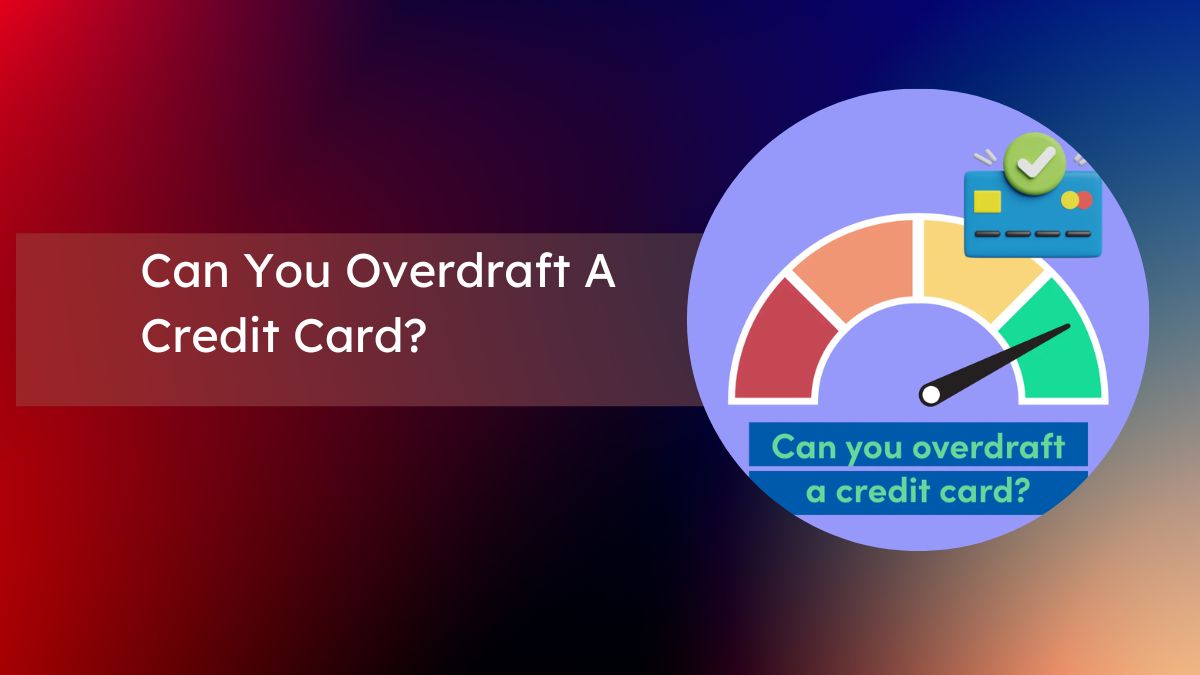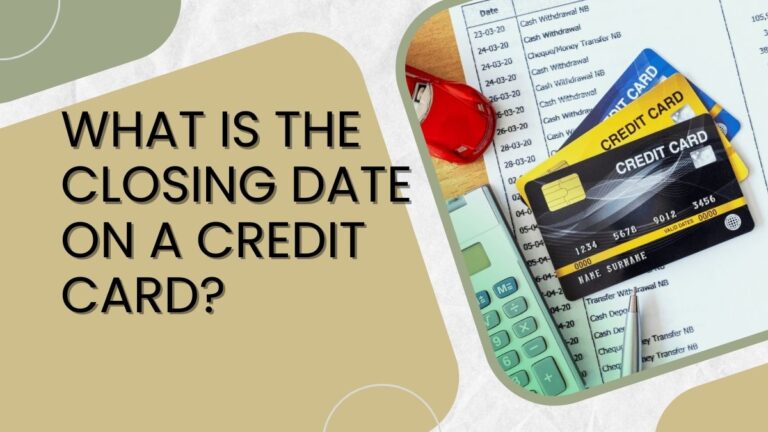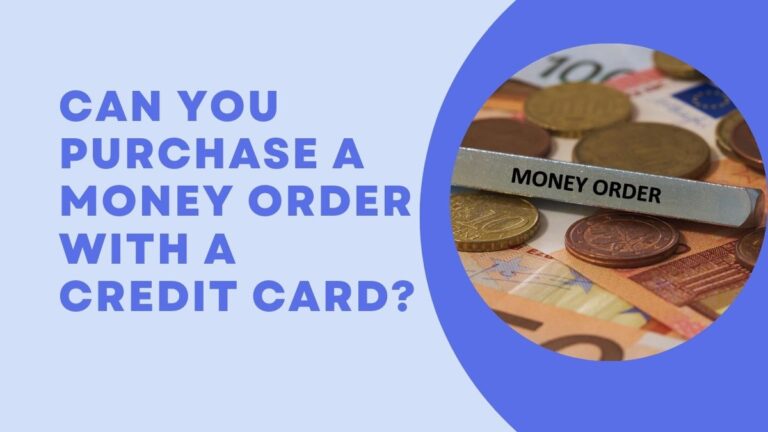Can You Overdraft A Credit Card?
Are you familiar with the sinking feeling in your stomach when you realize you’ve overspent on your credit card? It’s an all-too-common occurrence that can leave us scrambling to cover the costs. But have you ever wondered if it’s possible to overdraft a credit card? That’s right, just like a bank account, there is the potential to go into the red with your plastic companion.
In this blog post, we’ll explore what an overdraft is, how it works with credit cards, and most importantly, how to avoid finding yourself in this sticky situation. So let’s dive in and discover whether or not you can overdraft a credit card – and what steps you can take to stay on top of your finances!
What is an overdraft?
An overdraft is a financial term that refers to spending more money than what is currently available in your bank account. It’s like going into the negative balance territory, where you owe the bank instead of having funds available. Typically, an overdraft occurs when you write a check, make a debit card payment, or withdraw cash from an ATM without having sufficient funds in your account to cover the transaction.
So how does this relate to credit cards? Well, credit cards function differently from traditional bank accounts. When you use a credit card for purchases or cash advances, you’re essentially borrowing money from the credit card issuer. The amount you spend gets added to your outstanding balance and must be repaid within a specific timeframe, usually with interest.
While overdrafts are commonly associated with checking accounts and debit cards, it’s important to note that some credit cards do offer an option for “overdraft protection.” This means that if you exceed your credit limit on a purchase, rather than declining the transaction outright as most cards would do, it allows you to go over your limit by charging additional fees or temporarily increasing your available credit.
However, it’s crucial not to confuse overdraft protection on credit cards with traditional overdraft services offered by banks for checking accounts. These services allow transactions exceeding the available balance but come at high fees and can create debt traps if misused.
Now that we have explored what an overdraft entails let’s delve deeper into whether it is possible to actually overdraft a credit card and how best to avoid finding yourself in such circumstances.
How do overdrafts work with credit cards?
- When it comes to understanding how overdrafts work with credit cards, it’s essential to first grasp the concept of an overdraft. An overdraft occurs when you spend more money than you have available in your account. Traditionally, this has been associated with checking accounts, but some credit card providers offer a similar feature known as “overdraft protection.”
- With overdraft protection on a credit card, if you try to make a purchase that exceeds your available credit limit, the transaction may still go through instead of being declined. However, keep in mind that this is not free money – it essentially means borrowing beyond your limit and incurring additional fees or interest charges.
- Credit card companies often charge hefty fees for allowing these over-the-limit purchases. You’ll need to carefully review the terms and conditions of your particular credit card agreement to understand what fees apply and how they are calculated.
- It’s worth noting that not all credit cards offer overdraft protection. It’s typically an optional service that you can opt into if desired. If you’re unsure whether your credit card provides this feature or want to activate it or deactivate it, reach out directly to your card issuer for clarification.
Remember: while some people may find value in having access to funds beyond their set limit on occasion, relying too heavily on this feature can lead to excessive debt and financial strain.
To avoid potential issues with overspending or accidentally going into an overdraft state on your credit card:
- Keep track of your spending: Regularly monitor your transactions and stay aware of how much available balance remains on your card.
- Set up alerts: Many banks and credit issuers provide options for text or email notifications when purchases exceed certain thresholds.
- Create a budget: Establishing a budget will help ensure that you’re only charging what you can afford.
- Consider declining offers for “overdraft protection”: While it may seem like a safety net, overdraft protection can come with significant fees
Is it possible to overdraft a credit card?
- Is it possible to overdraft a credit card? This is a common question that many people have, especially those who are new to using credit cards. The answer is both yes and no, depending on how you define an “overdraft.”
- In traditional banking terms, an overdraft occurs when you spend more money than you have available in your account. However, with a credit card, the concept of overdraft works differently.
- When you use your credit card to make purchases or withdraw cash, you are essentially borrowing money from the card issuer. You have a set credit limit which determines how much you can borrow. If you try to make a transaction that exceeds your available credit limit, it will usually be declined.
- However, some credit card companies offer what’s known as “over-limit” or “credit line increase” options. These allow cardholders to exceed their predetermined limit temporarily. But keep in mind that this comes with additional fees and interest charges.
It’s important to note that going over your credit limit regularly or maxing out your card can negatively impact your credit score and financial health. So even though it may be technically possible to overdraft a credit card in certain situations, it’s not something advisable or recommended.
To avoid accidentally overspending on your credit card and potentially facing fees or damage to your financial standing:
- Keep track of your spending: Regularly monitor your transactions so that you know exactly how much of your available balance remains.
- Set up alerts: Many banks and creditors offer text or email notifications when transactions are made on the account.
- Stick within budget: Create a monthly budget for yourself and stick to it.
- Pay attention to due dates: Make sure payments are always made on time; late payments can result in penalties.
Being mindful of these tips will help ensure responsible use of your Credit Card while avoiding potential overdrafts
How to avoid over drafting your credit card?
- Keep Track of Your Spending
One of the most effective ways to avoid over drafting your credit card is by keeping a close eye on your spending. Make sure to regularly check your credit card statements and track all purchases you make. This will give you a clear picture of where your money is going and help prevent overspending. - Set Up Account Alerts
Most credit card companies offer account alerts that can be sent via email or text message. Take advantage of these alerts by setting up notifications for low balances, payment due dates, and large purchases. These alerts will serve as reminders to stay within your budget and prevent any unexpected overdrafts. - Create a Budget
Creating a monthly budget is essential for managing your finances effectively and avoiding overdrafts on your credit card. Allocate funds for necessary expenses such as bills, groceries, and transportation, while also leaving room for discretionary spending. - Use Mobile Banking Apps
Mobile banking apps provide an easy way to monitor your account balances in real time from anywhere at any time. By regularly checking your account balance through these apps, you can ensure that you have enough available credit before making additional purchases. - Opt-Out of Overdraft Protection
While it may seem counterintuitive, opting out of overdraft protection can actually help you avoid overspending on your credit card. Without this feature enabled, transactions that exceed the available limit will simply be declined rather than resulting in an expensive overdraft fee.
By implementing these strategies into your financial routine, you’ll significantly reduce the risk of overdrawing on your credit cards and maintain better control over your spending habits.
Conclusion
Managing your credit card responsibly is essential to avoid unnecessary fees and financial stress. While it is not possible to overdraft a credit card in the traditional sense, you can still face consequences for exceeding your credit limit or making late payments.
To avoid these pitfalls, it’s crucial to stay aware of your available credit and spending habits. Regularly monitor your credit card statements, set up alerts for approaching limits, and make timely payments to ensure you stay within your means.
Remember that a credit card should be used as a tool for convenience and building good financial habits. By staying informed about how overdrafts work with credit cards and taking proactive steps to manage them effectively, you can maintain a healthy financial situation while reaping the benefits of responsible credit card use.
So next time someone asks if you can overdraft on a credit card, confidently explain that while technically not an overdraft like with checking accounts, there are still consequences for mismanaging your spending. Stay vigilant, track your expenses diligently, and enjoy the perks of using a credit card wisely!






